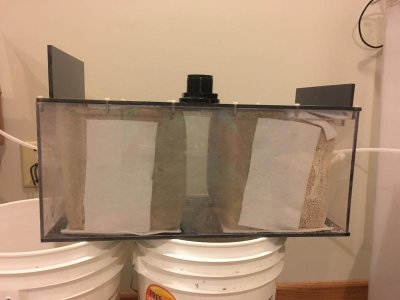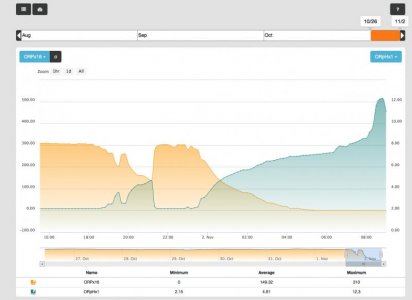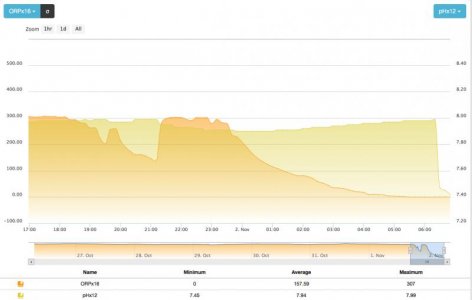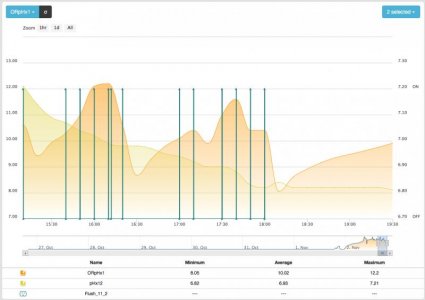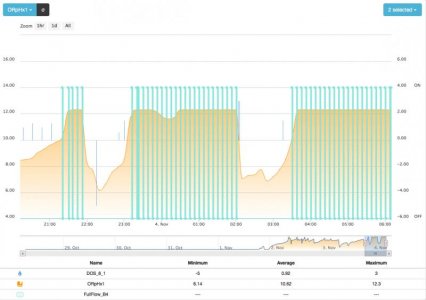The intent behind the experiment was to determine exactly how all of this might work and to see if I could get the CerMedia, housing the bacteria to perform the way this DyMiCo filter does, at least from a nitrate and phosphate removal process.
A few updates since this morning's post.
I found that the Apex does not know how to handle the lower millivolt ranges that the probe hits. The Apex bottoms out with a zero ORP reading and won't go negative. However, I can set the probe up as a pH probe and it will continue to read. I have a request in to Apex to get the raw milli-volt readings for both the pH and ORP values so I can convert to milli-volts.
I also saw what I believe is your "œknee" effect on the pHX (actually an ORP probe). Once the probe started to read about 10.5 it started to rise (or fall in reality if I were looking at the mv reading of the probe) rapidly. Check it the thumbnail below.
I also noticed that I don't need to dos the carbon that often. A small bump of water added will keep things from crashing. Also, the actual pH probe I moved into the filter is running a pH of around 7.2 to 7.3. I am not sure what that is a result of but I assume it is related to lower O2 levels.
Aaron

